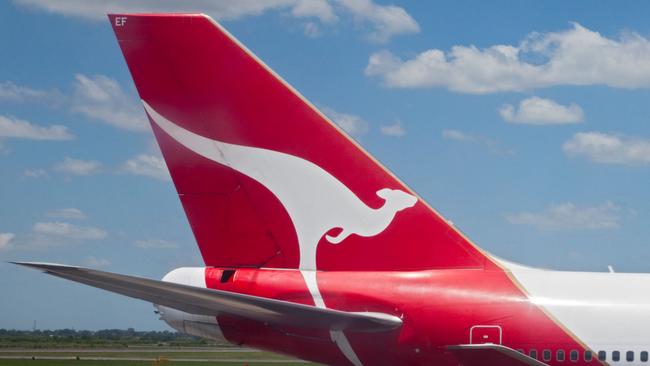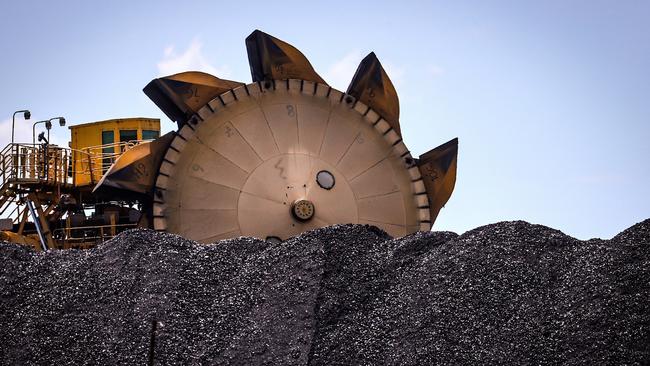
And as Qantas is starting from a position of brand damage it’s going to be a difficult balancing act that would challenge even the most seasoned of chief executives.
On the one hand, Hudson needs to quickly soften the image of the airline’s uncompromising approach to costs and tough corporate culture. But on the other, Hudson can’t show any signs of weakness that would provide an opening for long-time advisories – from unions to airports – to call the shots when it comes to running the airline. It’s like playing defensive and offensive at the same time.
In her first official day in the role, Hudson held a series of back-to-back meetings with staff and pilots who are also getting used to the fact that after 15 years Joyce is no longer in charge.

This week’s earlier-than-expected exit of long-serving boss Joyce and move to anointed successor Hudson was designed as a circuit breaker after Qantas lost the public debate with how it was treating customers.
The final trigger were the explosive ACCC allegations that Qantas has knowingly sold tickets for already cancelled flights.
The other key challenge for Hudson is that as former chief financial officer she is a part of the culture that ultimately forced the early exit of Joyce.
If this were a normal handover in a normal company, an internal succession would be a positive as it represents a continuity. However, investors and customers are now demanding a change of direction.
This week Qantas chairman Richard Goyder said Hudson was the “right person” for the job with her work in keeping the airline afloat during the pandemic “exceptional”.
The playbook when an outside chief executive comes in with a mandate for change is to blame their predecessor for everything. This allows them to make a strong case to the board to rebase profits by increasing service and lower prices to win back customers.
The new CEO can also set the bar low for investor expectations to over-deliver in several years time.
Hudson doesn’t have this luxury. The former CFO owns the strategy and the numbers, including Qantas’ aggressive cost-out programs.
There is also a small risk in the back of investors’ minds, that inside the ACCC’s allegations Hudson, as former chief financial officer, could be tainted by the legal action. To be clear, the ACCC’s allegations do not name Hudson or any Qantas executive and they remain untested in court.

While the switch to the new CEO was put on the fast track, substantial work has already got under way in the background to make the transition smooth as silk. Hudson already has the benefit of a new top executive team in place given rapid turnover at the airline in the period through Covid-19.
This will make her push for cultural change easier and reduce internal disruption.
Strategy and tech boss Rob Marcolina had already been nominated as chief financial officer, and immediately stepped into the role Hudson vacated.
Elsewhere, chief customer officer Markus Svensson takes charge of the earnings engine room of Qantas Domestic and at the same time a search is under way for the new CEO of regional arm QantasLink with the looming retirement of John Gissing.
The flagship Qantas International business saw the appointment of former Air New Zealand top executive Cam Wallace from July. Jetstar boss Stephanie Tully was appointed in November last year while Olivia Wirth – who was also in the running to become CEO – remains in charge of Qantas Loyalty. Former freight boss Catriona Larritt takes on the critical chief customer role which also combines with a digital role.
Hudson will meet with investors in coming weeks and drive home the message the airline’s longer-term strategy is intact.

At the heart of this Qantas has the biggest fleet overhaul under way in its history with more than 130 aircraft on order between now and the end of the decade. Joyce and Hudson last month signed off on an extension to the program which involves replacing its ageing A330s and A380 superjumbos with new A350 and Boeing 787 aircraft from mid-2027.
In total this will see the arrival of new aircraft every few weeks over the next few years. This will be welcomed by customers, but in itself the volume of deliveries is likely to cause logistical pressures behind the scenes.
Even with strong demand in the short term, airfares are starting to pull back. Rival Virgin Australia is preparing to relist on the ASX which means it too will be attempting to drive as much volume as possible through domestic discounting.
This means earnings will be harder to come by for Hudson’s first year. At the same time she faces the currency headwind with an expected lower Australian dollar for longer, likely to mean more people will holiday at home.
Aviation is ultimately a cyclical business and today’s boom time will soon fade out. Indeed, with every airline in the world frantically adding capacity Qantas faces a real squeeze in international profit margins which means costs will again have to be closely managed.
Hudson helped deliver Joyce’s $1bn pandemic cost-out program which puts her ahead of the curve and unlike other global carriers the debt levels are long term lows.
Coal call
Miners aren’t rushing to embrace it, but they can quietly live with the new NSW coal royalty increases designed to raise more cash to plug another budget deficit.
Unveiled by the state’s Treasurer, Daniel Mookhey, it was the process over the outcome that soothed what could have been another flashpoint for the mining industry.
The royalty for coal from open-cut mines increases to 10.8 per cent from 8.2 per cent from mid next year, while underground royalties increase to 9.8 per cent from 7.2 per cent. There are royalty discounts in place for ultra deep underground mines that run at a higher cost.
It also removes a domestic reservation rules and a price cap for domestic sales introduced last year. These measures had threatened the early closure of BHP’s Mt Arthur mine in the Hunter Valley. BHP will now run the numbers on the mine, although the sharp fall in energy coal prices will be factor in its decision.
Still, miners contrasted the NSW move with Queensland that last year blindsided the industry after it pushed through a tiered royalty structure aimed at capturing a slice of the super profits on surging coal sales. The new Queensland royalties were pushed through the state budget, catching miners off guard.

The Queensland scheme delivered a $15bn windfall in its first year, although this is expected to taper off sharply this year as coal prices pull back. The NSW scheme is forecast to deliver $2.7bn over the next four years.
Miners say there was daylight between NSW and Queensland schemes and this largely comes down to a round of talks between the industry and the NSW government. Those close to the process contrast the experience with Queensland where there was virtually no engagement before the super-sized royalty was announced. Even so they pointed to the cumulative impact on costs, with higher royalties across two states, then at a national level the safeguard mechanism and industrial relations changes.
For NSW there were three options on the table and it is understood the package that landed was considered the least damaging outcome from where the industry stands.
Queensland’s position had drawn anger from mining giant BHP in particular who has threatened an investment strike for its coal assets in the state. The move had also drawn rare and pointed criticism from the Japanese government, amid fears businesses there would face additional costs in coal contracts. NSW also consulted with the state’s major export buyers on the new scheme.
BHP’s Mike Henry last month said the combination of the high royalties and the way it was introduced had introduced a new layer of investment risk for his operations in the state.
“There comes a point at which investments elsewhere are more attractive on a return and risk basis. And we’ve crossed that threshold in respect of Queensland,” Henry said.
johnstone@theaustralian.com.au








It’s not going to be a smooth ride for incoming Qantas boss Vanessa Hudson, who needs to quickly differentiate herself from her former boss Alan Joyce.